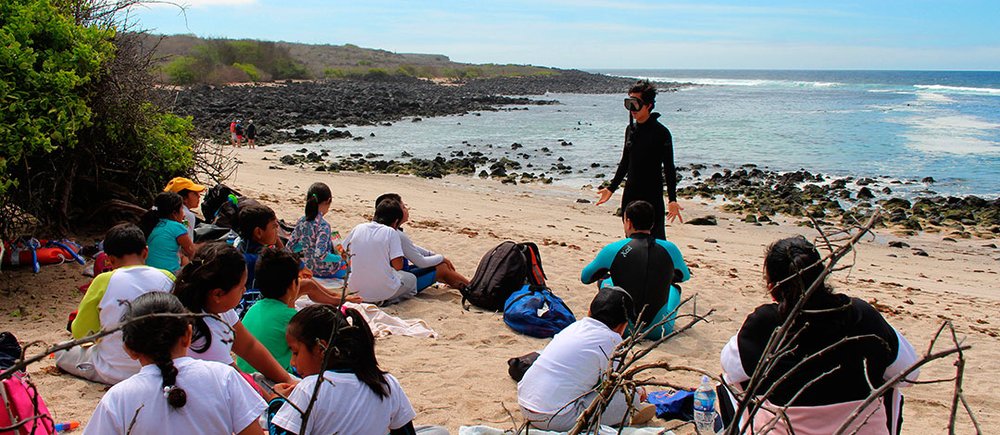
Growing up in the center of Guayaquil, the largest city in Ecuador, I spent my days surrounded by colorful buses, honking cars and taxis screeching to a hault at the line. I remember how much I wanted the weekend to start, and convince my parents to go to the beach. Just drink coconut water on a warm sandy beach and watch the crabs feed while the waves hit the reef. This was my dream, I have always felt connected to nature in a very special way, so much so that after finishing my secondary studies, I decided to apply to volunteer in the Galapagos Islands.
The archipelago changed my life by showing me all the endemism of its terrestrial species and the pristine sea that surrounds it. However, the most interesting thing was the level of coexistence with animals. Here I discovered my favorite activity, diving. For this reason, I did a masters course in diving. The islands have shown me that when it comes to conservation, the most important thing is education and commitment.
My experience at the Charles Darwin Foundation
I volunteered at the Charles Darwin Foundation (CDF) in the land bird project in 2016. Later, I started my university studies in the United States, however, I decided to pause them for a year when I applied for a professional volunteer position to help with the Marine Education project at the CDF.
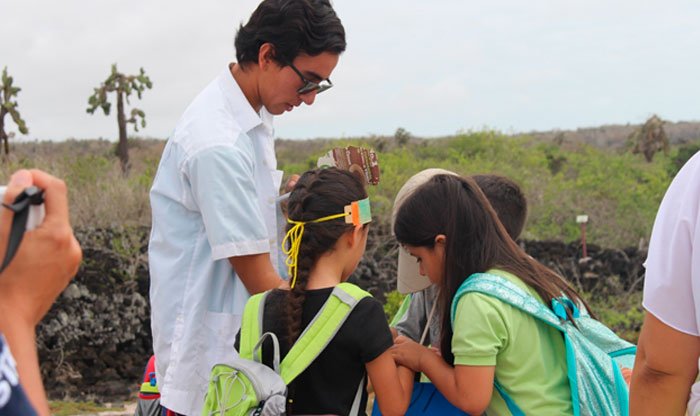
Within the framework of marine education, the CDF has 4 components: Marine Mornings, Shark-ambassadors and the Marine World interpretation center and the construction of a Marine plastic sculpture. Currently, there is an additional parallel activity that consists of the collection of plastic from the oceans with the community.
The marine education project led by the CDF began in 2017, with the focus of involving the community in the conservation of sharks and marine ecosystems.
As part of the project, the Van Straelen Interpretation Center of the CDF and the Directorate of the Galapagos National Park was renovated after 18 years with an exhibition called "Mundo Marino", which in addition to receiving local, national and international visitors, is used as a classroom to complement the activities with the students.
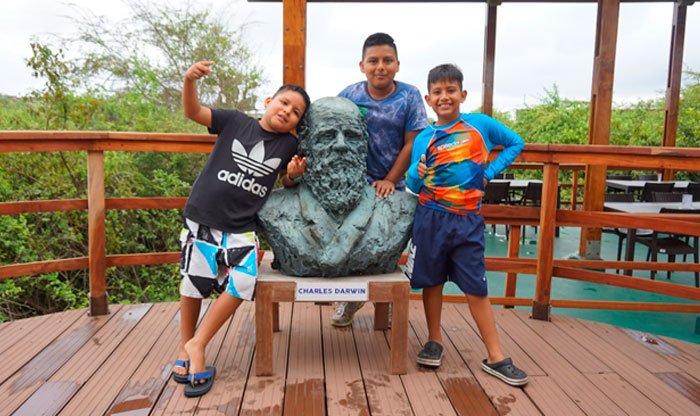
Marine Mornings
As part of our project, we implemented the "Mañanas Marinas" component, which offers the teachers of the different educational institutions an alternative to take field trips with their students and learn more about the conservation of the oceans. These outings allow students from 2nd to 10th grade of the Santa Cruz, San Cristóbal, Isabela and Floreana Islands to explore different ecosystems of their environment. We have base activities that adapt to the teacher's requirement to complement the topics learned in the classroom focusing mainly on sharks, marine ecosystems and the impact of plastic in the oceans. As part of the activities with the kids, we take a tour of "Mundo Marino", we go to the beach to snorkel, we identify species, we have coastal cleanings, explore the mangroves and rocky shores, watch documentaries, among others.

Developing a close working relationship with the students has been inspiring, as it has helped me see its full potential. They constantly question what happens around them, not only with science, but also with social problems. Young people on the island face a variety of challenges on a daily basis, but we cover these difficult issues by continually shaping respect, discussing the consequences of our actions, cultivating creativity in their work and addressing responsibility through group study sessions and conversations. It is important to discover and develop self-esteem, and my participation in this program has focused a lot on this topic. Investing time to work with our youth can provide a long-term solution for the future of the island community. In addition, I believe that, if you know your environment and the importance of each species and ecosystem since childhood, the conscience will prevail for its conservation.

Marine Mornings is the best initiative for the little ones. If I were a child, I would have loved to participate! There is a phrase that I always have in my heart that most children have told me: "Thanks for teaching me to swim, there are so many fish!".
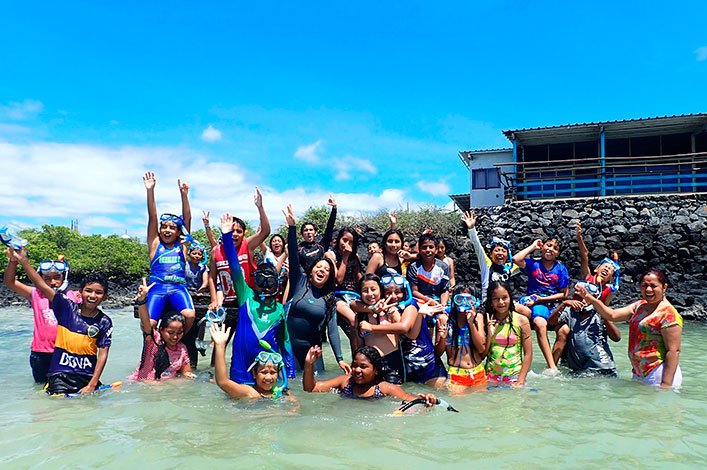
Shark Ambassadors
Shark Ambassadors is another level of experience. Every Wednesday and Friday, we meet with our Club to do practice exercises, mostly on the water, to learn about the conservation of the oceans and their biodiversity through exploration.
The Shark Ambassadors work and do the research practices as they mentioned "with a real scientist" since in many activities we are accompanied by the CDF scientists. At the moment we have 50 local students between 12 and 17 years old from different schools in Santa Cruz.
Our students are thirsty for information and come every week voluntarily. It is not an obligation to come, however, we have a great reception. Every day they ask different questions and their greater understanding of science and society is notorious.
This phrase was the one that I liked most of all the talks with scientists "Galapagos is a very fragile ecosystem and we have to do our best to protect it" - Pelayo Salinas, FCD.
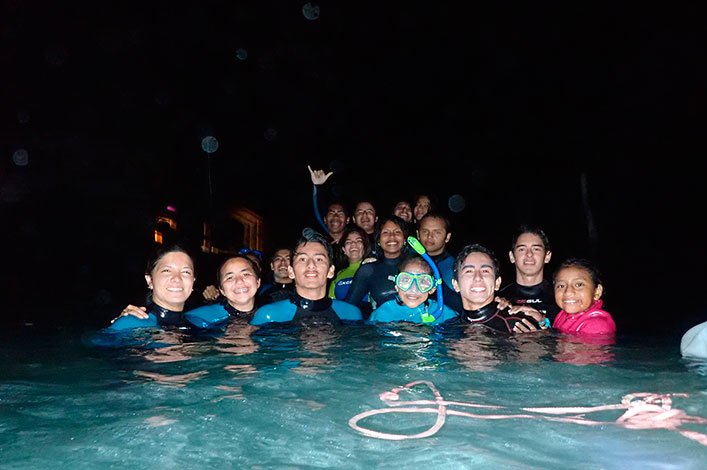
During university I made several presentations of the most inspiring of my dives, the importance of ocean conservation, and even gave a talk about shark finning. I also talked about plastic pollution and how it affects the oceans. Now, I have the opportunity to share these issues with the children of the community, who share their experiences, give good examples and talk about the new knowledge acquired.
I am very grateful for this opportunity. This clearly shows his promising future and the pride I have for the opportunity to lead youth programs.
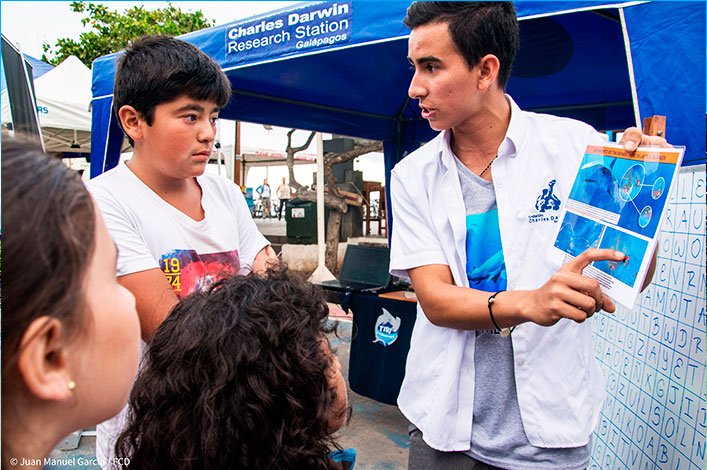
This project is possible thanks to the generous support of the Save Our Seas Foundation. Thank you with all my heart for this program for the community.
If you wish to volunteer for projects at the Charles Darwin Research Station in Galapagos.




